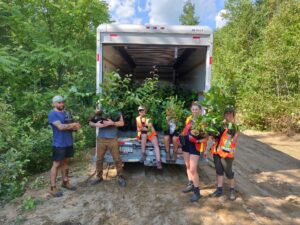A project 5 years in the making, the Campbell Creek dam removal has been completed and the former headpond has been replanted with native grasses, willows, and trees. Our project team put together a short video documenting the process. Check it out and see how all of our project partners worked together to bring this wonderful project to fruition and how we hope it will positively impact the ecosystem.
Built in 1919, the Campbell Creek dam was a well-known landmark in Marysville. It once provided water to the Marysville Cotton Mill — the largest of its kind in the Maritimes, but with the closure of the mill in the 1970s, the dam became obsolete and began to deteriorate.
After assessing the dam in recent years, engineers recommended its removal as it was a liability in terms of safety. It also negatively affected fish habitat and aquatic connectivity for over a century. The dam did not meet the Canadian Dam Association guidelines with respect to the hydraulic capacity of the spillways, stability, seepage and erosion, or public safety and fish passage was non-existent.
This project consisted of several phases, including baseline monitoring of the site using biological, physical and chemical parameters, site preparation, the removal of the dam, and the restoration of the site following removal.
Phase 1: Draining the Headpond
This phase started in the summer of 2020 and involved removing a blockage from the sluicegate that was keeping the headpond filled with water. Draining the headpond was done one season before the removal of the dam in order to allow riparian vegetation to establish, as well as helping to retain the structure of the soil in the area prior to the construction process. The dam was also notched to prevent the headpond from being able to fill in future.
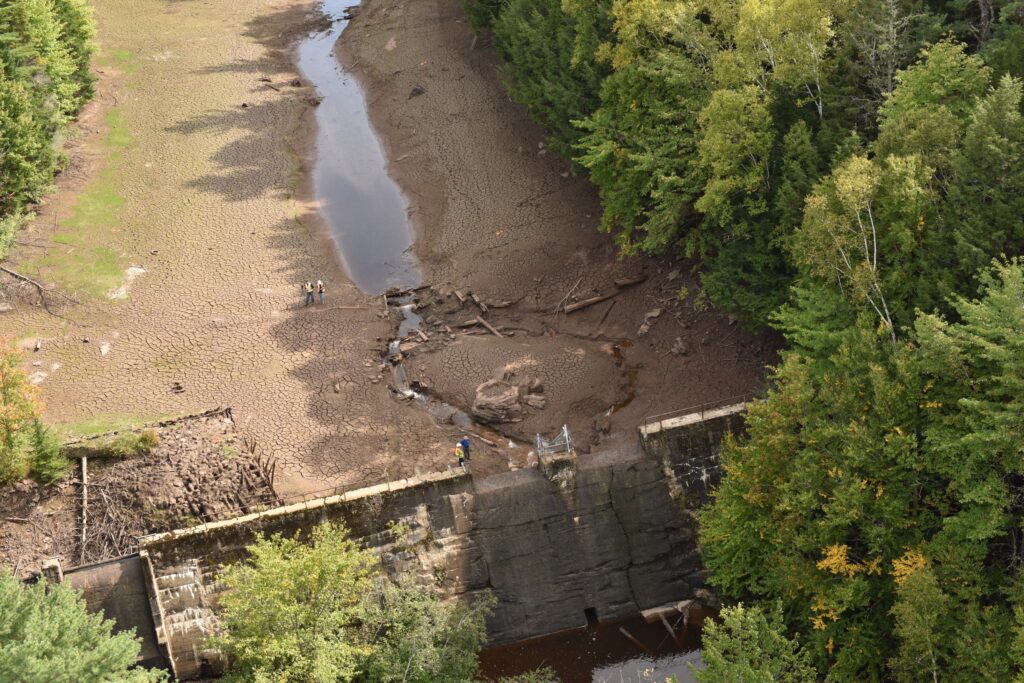
Phase 2: Dam Removal & Construction
This phase was the largest phase of the project and took place this past summer and fall (2021). The dam removal occurred during the low-flow period of the year, as this was when water levels would be the lowest and the soils would be the driest – meaning that they would be more able to support the heavy machinery required for construction. Site access was also designed prior to this in a way that would minimize the disturbance to soil and vegetation.
Due to the age of the dam and the fact that the headpond was situated on a potential paleo-shoreline, archeological surveying of the site and monitoring throughout the construction process was necessitated. Provincial archaeologists conducted photogrammetric mapping and dendrochronological dating of the oldest parts of the dam and we were fortunate to receive support from Colbr Consulting through their outreach program to conduct testing and monitoring prior to and during construction.
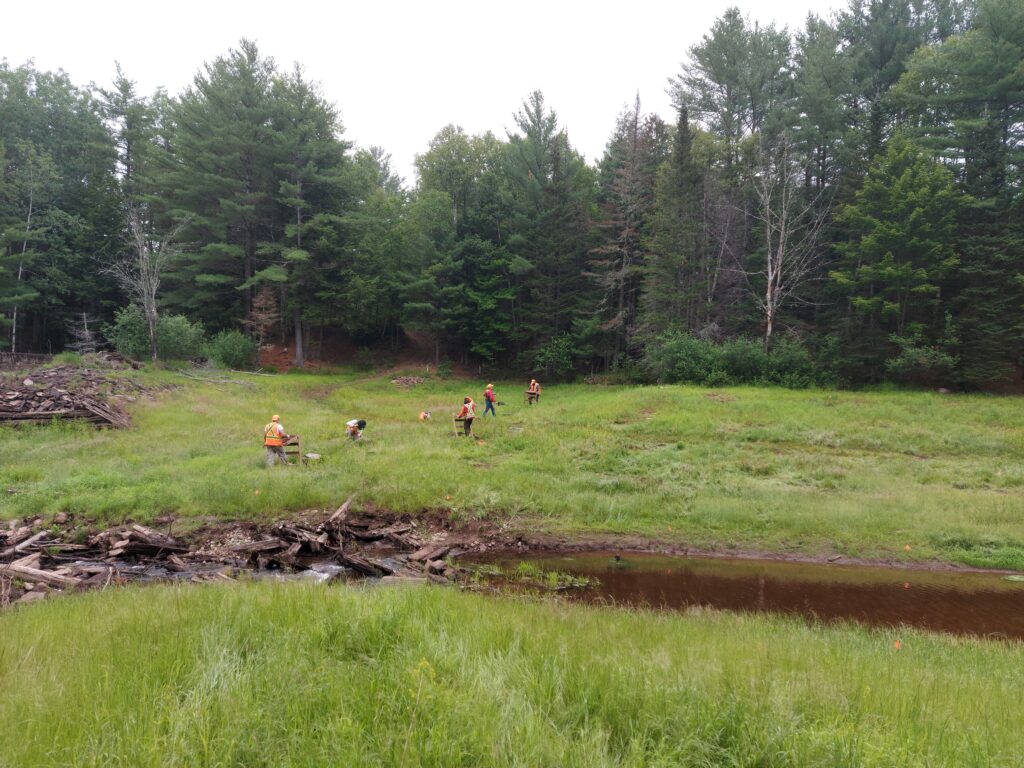
Prior to, and during the dam removal, several fish rescues were performed to mitigate any fish mortality in the construction process. The fish rescue involved electrofishing the stream above and around the construction zone and releasing all of the fish downstream of the dam, at a safe distance from the construction. A barrier was installed at both ends of the area to prevent fish or other aquatic creatures from entering the dam removal site during construction.
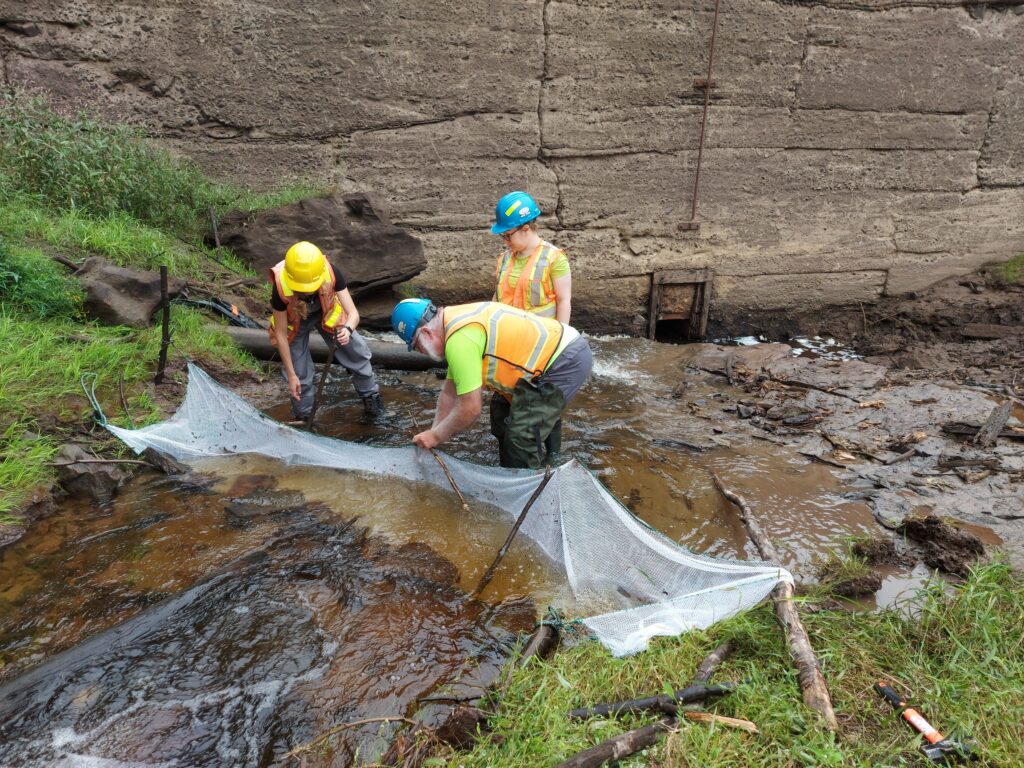
The removal of the dam took place over several weeks and involved clearing a temporary access route to the headpond for the heavy machinery, transporting the machinery and equipment into the site, and demolishing the dam. During this time the course of the creek had to be re-directed several times as the machinery worked from one side of the river to the other, crushing and removing the concrete. The concrete of the dam was laid to rest on site, buried in the streambank and covered in topsoil to be planted with vegetation. As of the 22nd of September 2021, the dam had been completely removed and we were ready for phase 3 – Restoration!
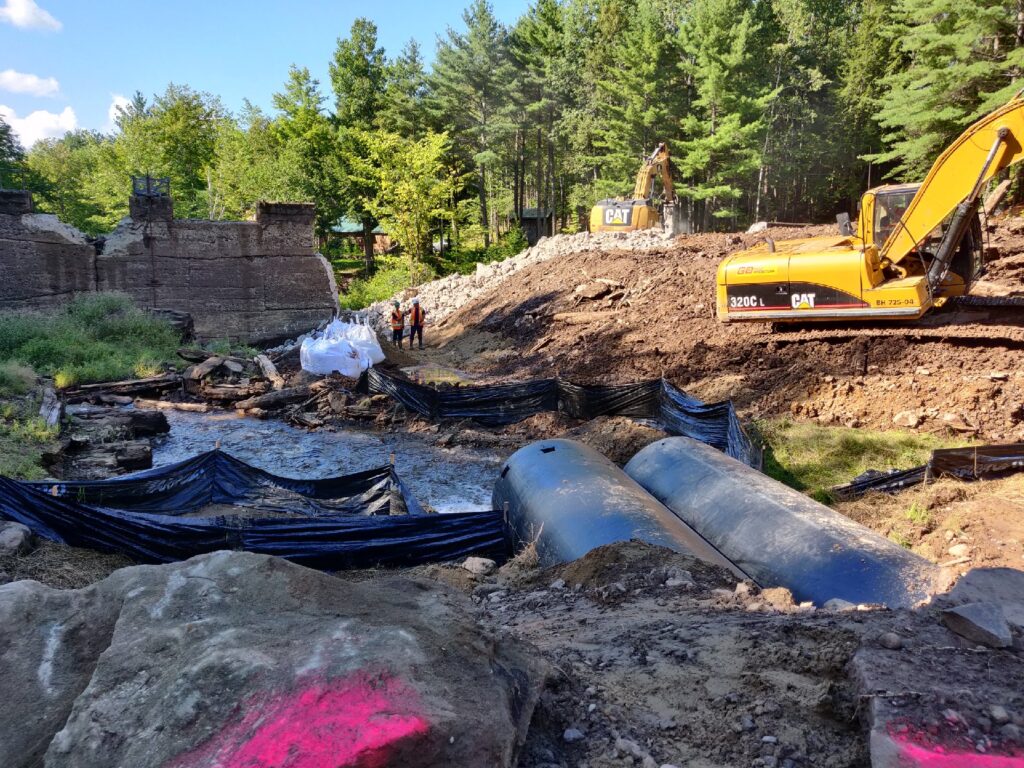

Phase 3: Restoration
Post-dam removal the newly established creek channel was constructed to facilitate fish passage, with a roughened channel comprising boulders of local bedrock and a series of pools to help fish navigate the slope upstream.
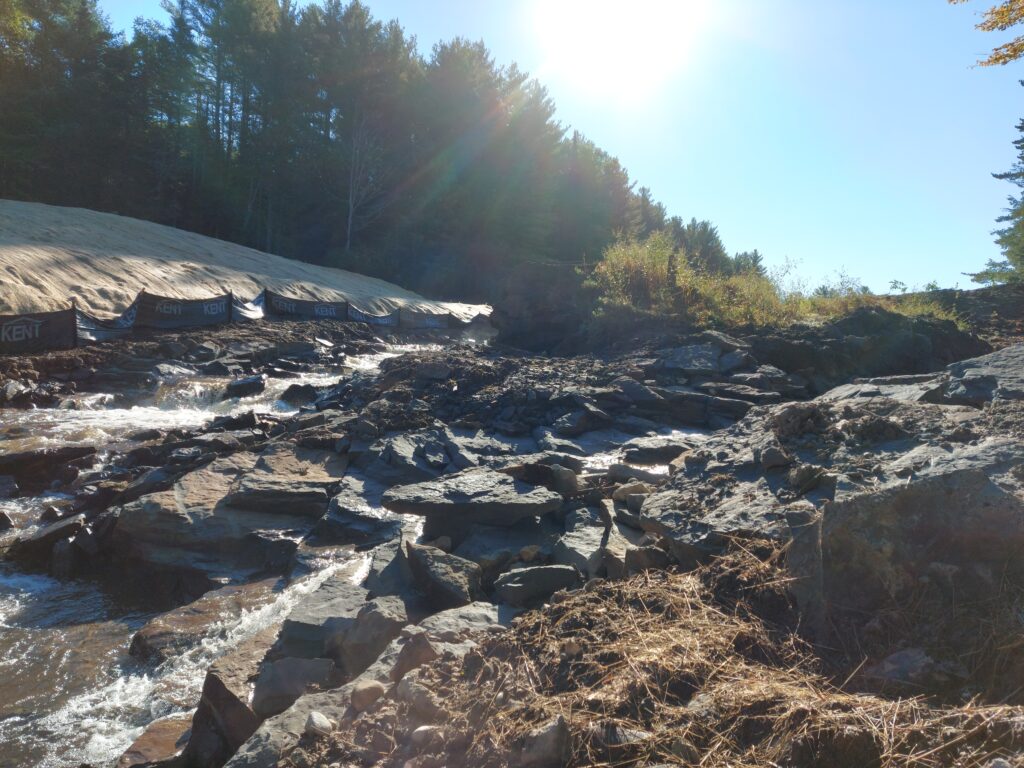
The former headpond was planted with over 3000 native Acadian forest species including: red oak, eastern white pine, red spruce, yellow and white birch. Due to tricky site access, which did not allow vehicle through the headpond, all vegetation had to be carried into site by hand. Planting was carried out with the support of a stellar crew from Community Forests Canada, who planted the entire site in a single afternoon, a truly Herculean effort.
In addition to tree planting, over 900 native riparian shrubs were staked and planted along the newly established river banks and the construction zone was seeded with appropriate grass by hand to mitigate erosion and sedimentation.
Ecological restoration and recovery do not occur overnight – these are long-term processes that we have sought to support and optimize through the removal of the dam and restoration of the stream channel and headpond.
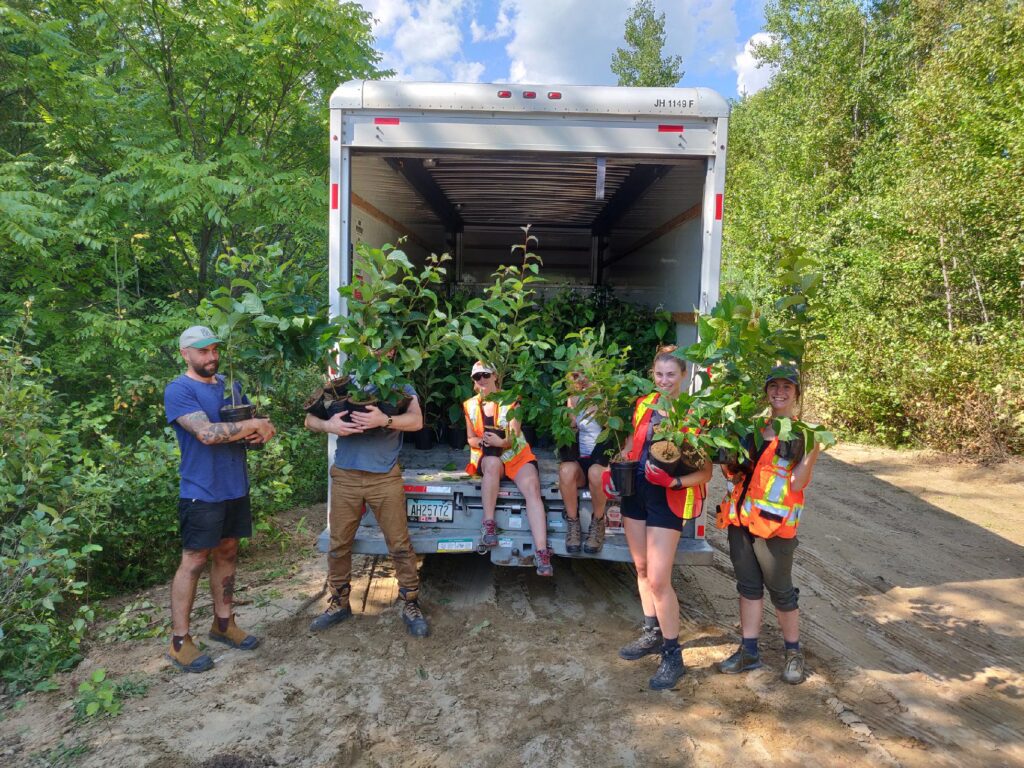
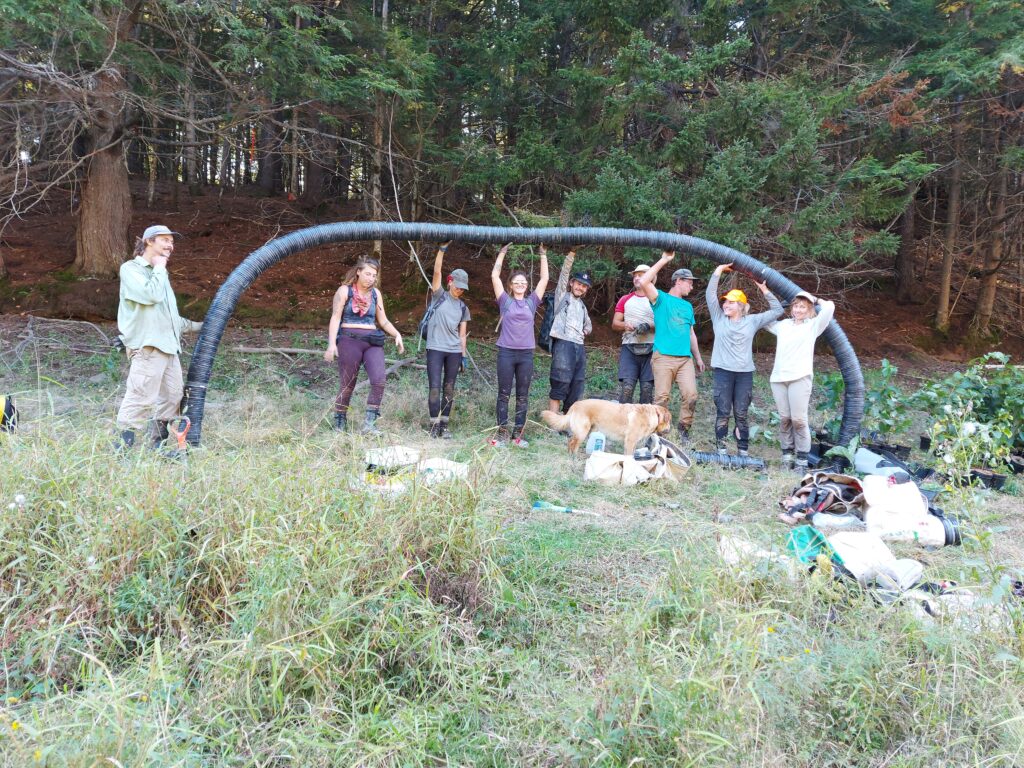
Phase 4: Post-Restoration Monitoring
While there was a large amount of monitoring done prior to the project, additional monitoring was also required immediately following the dam removal, and will be conducted for several years into the future. This monitoring will continue each year until 2024 to assess the impact of the dam removal on the local ecosystem.
Environmental monitoring will include studying the changes in local ecology, water quality, hydrology and river morphology that have resulted from the removal of the dam as the stream returns to its natural state. It will also include studying benthic macroinvertebrates, and environmental DNA sampling for species-at-risk. We expect that environmental parameters will improve over time, but monitoring will ensure that this is the case, allowing us to determine whether further interventions are needed, and ensure that the ecosystem is returning to its natural state.
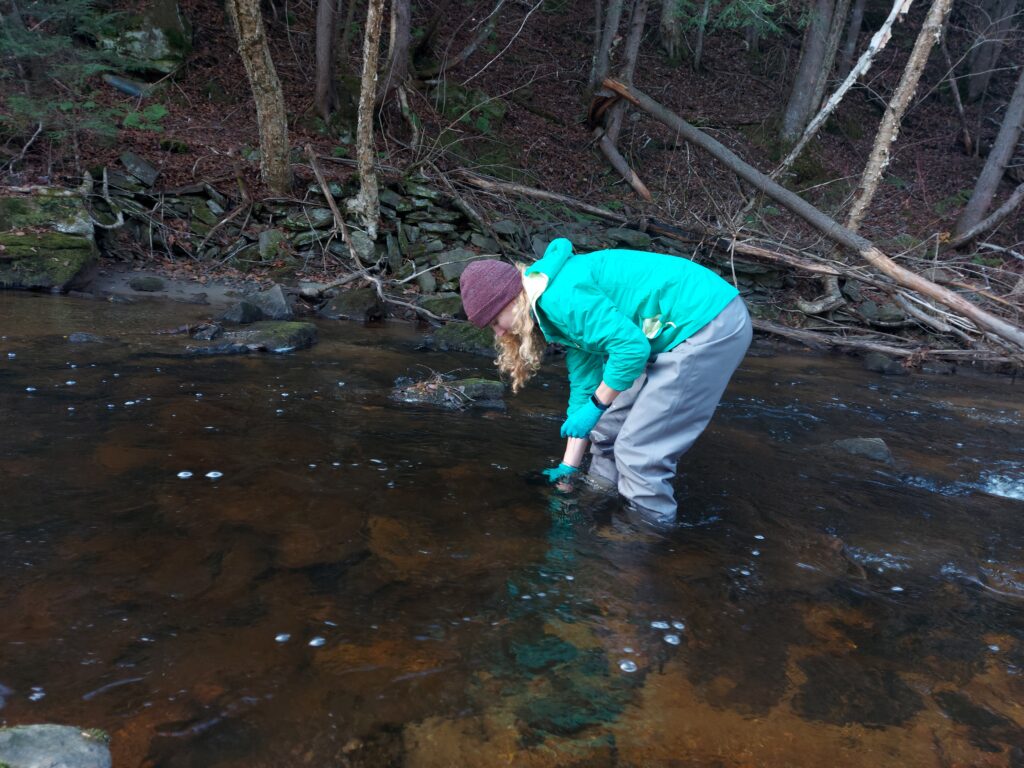
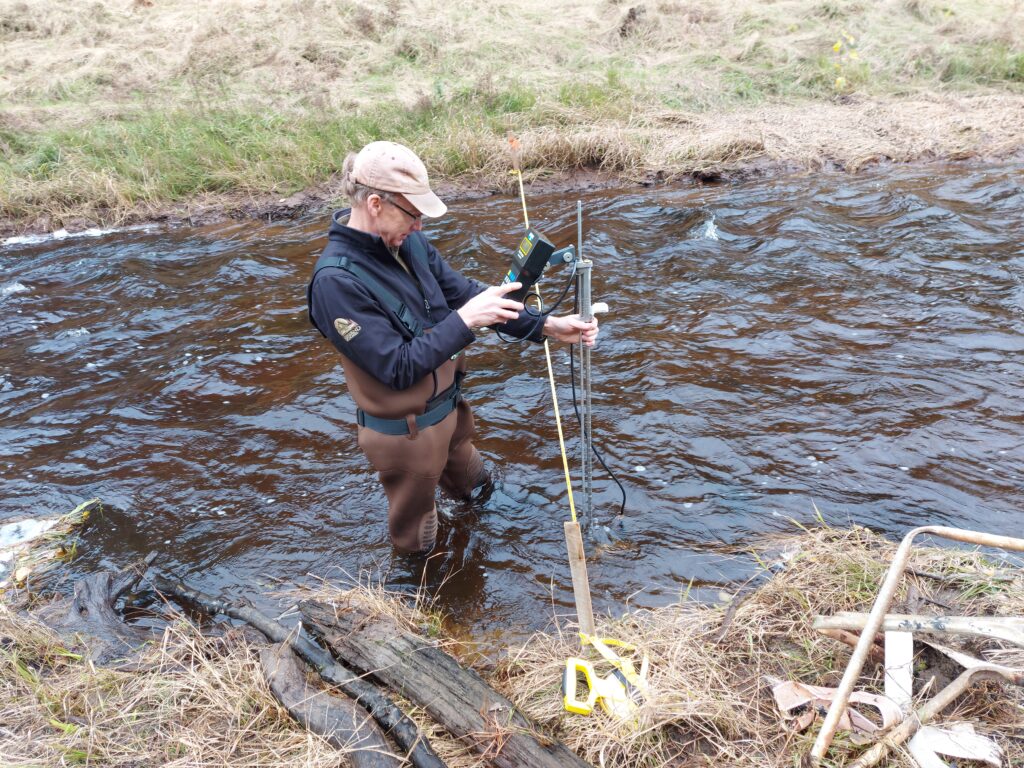
By removing the Campbell Creek dam, this project has not only removed a public safety liability, but has also initiated the process of the restoration of Campbell Creek, worked to improve water quality, and improved the habitat for native fish. For the first time in over a century, Campbell Creek is freely flowing!
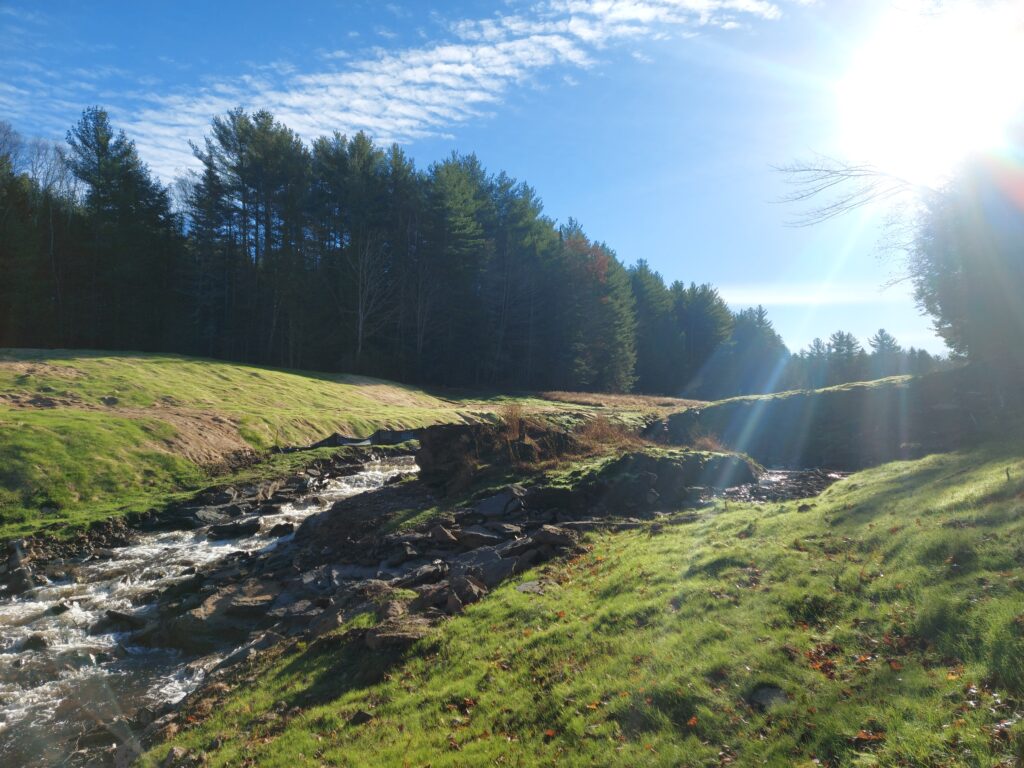
Again, we would like to thank our numerous partners who came together to bring this project to fruition, and we feel privileged to be part of this Wolastoquey-led initiative. The removal of the dam and restoration of the former headpond will provide habitat for aquatic species-at-risk: Atlantic salmon and American eel, as well as other coldwater fish (brook trout & sea lamprey), and terrestrial species. In addition, the restored creek will provide improved water quality, landscape connectivity and downstream regulation of water & sediment flow.
Our project partners include: the Maliseet Nation Conservation Council, Saint Mary’s First Nation, Wolastoqey Nation New Brunswick, the City of Fredericton, the Atlantic Salmon Federation, Community Forests Canada, Colbr Consulting and Hilcon Engineering. Funding for this work was provided by the Department of Fisheries and Oceans, the Atlantic Salmon Conservation Foundation and WWF-Canada.

